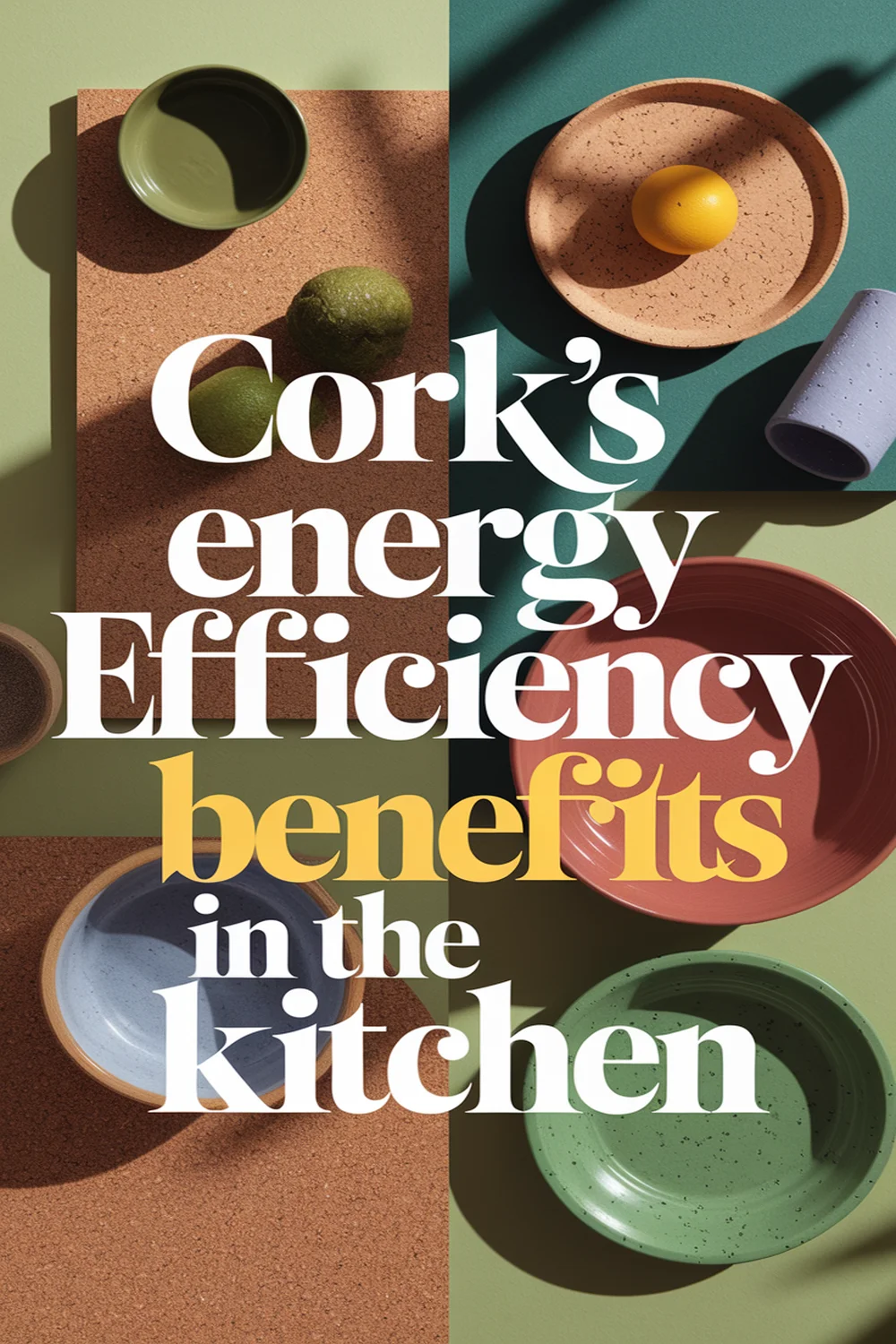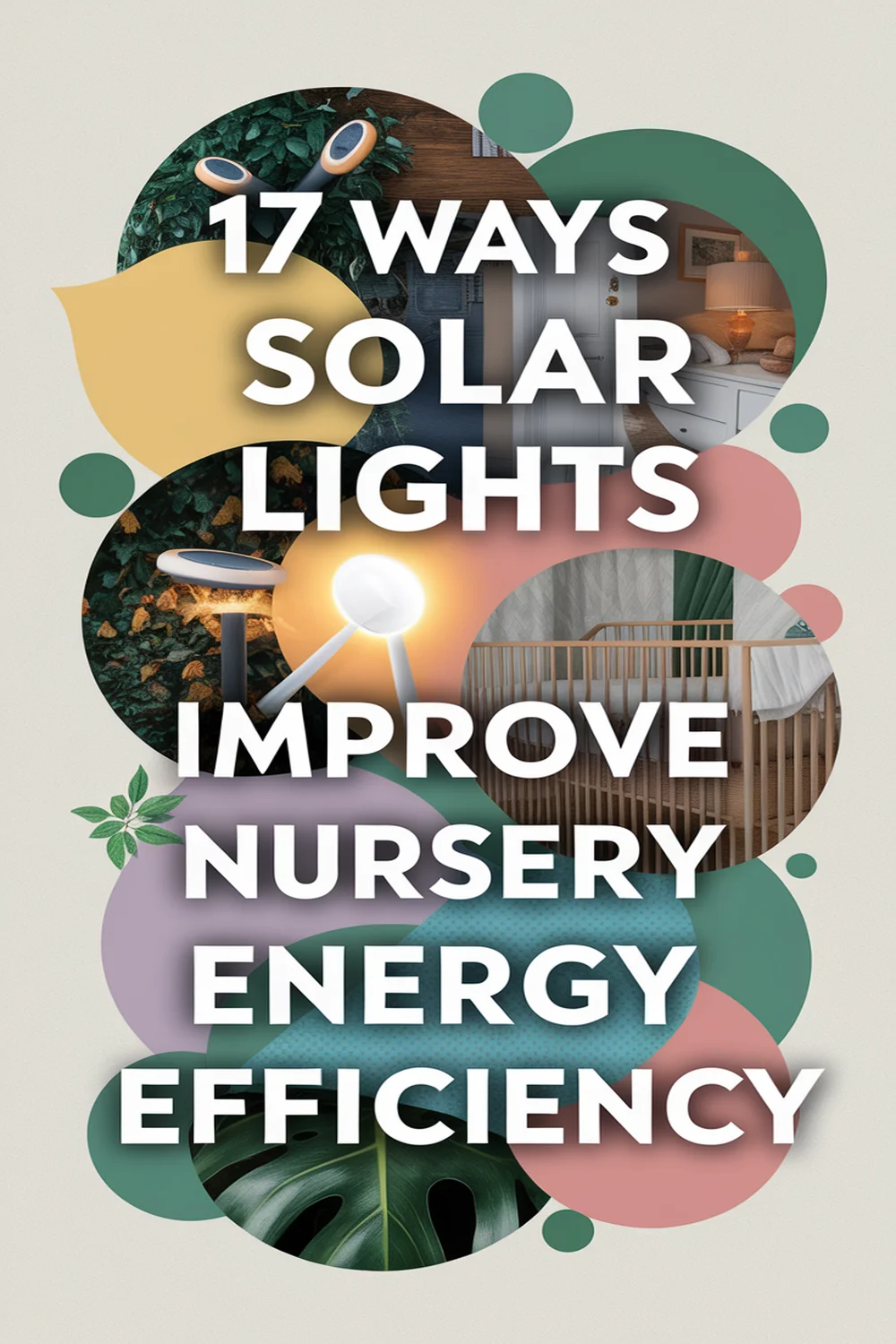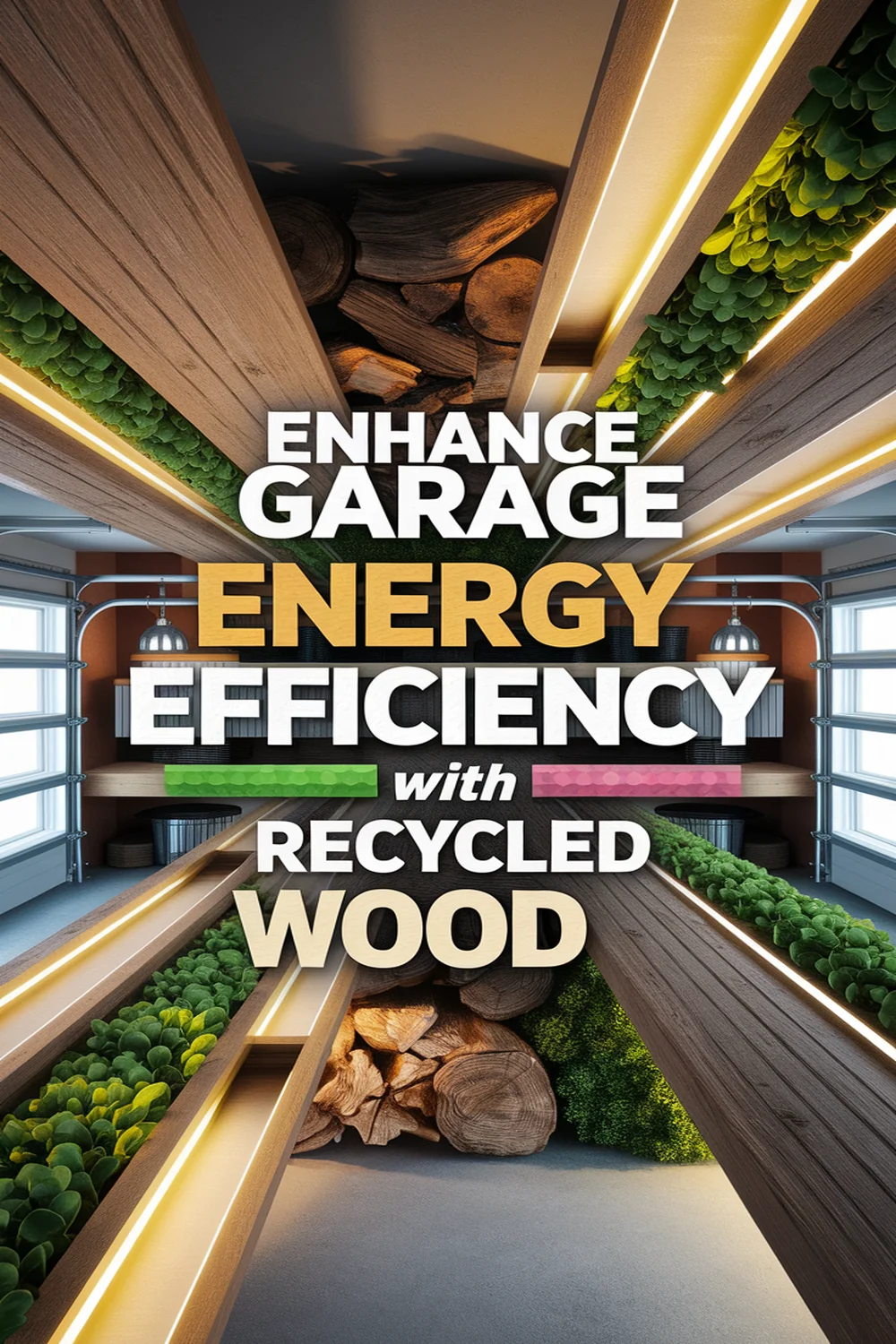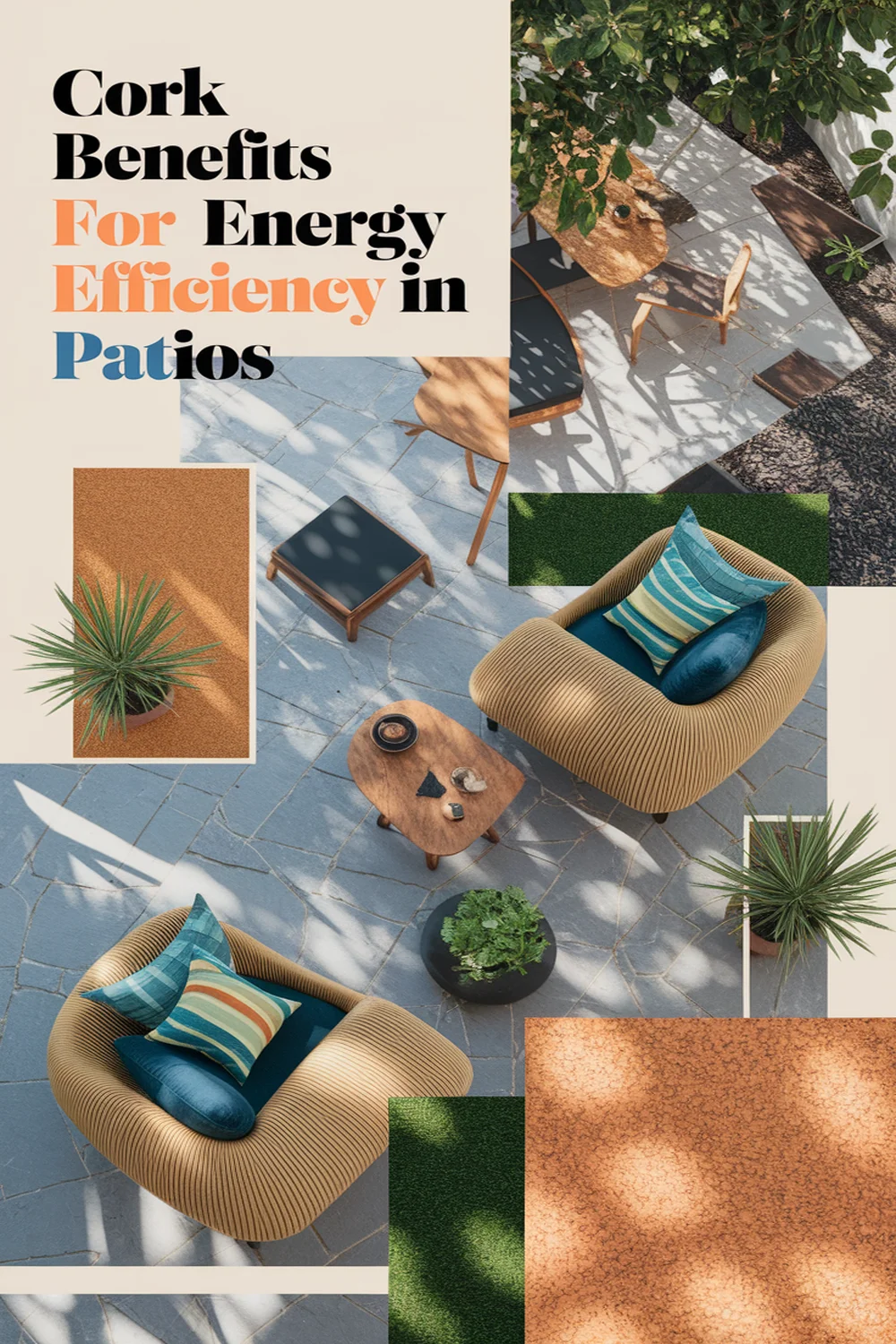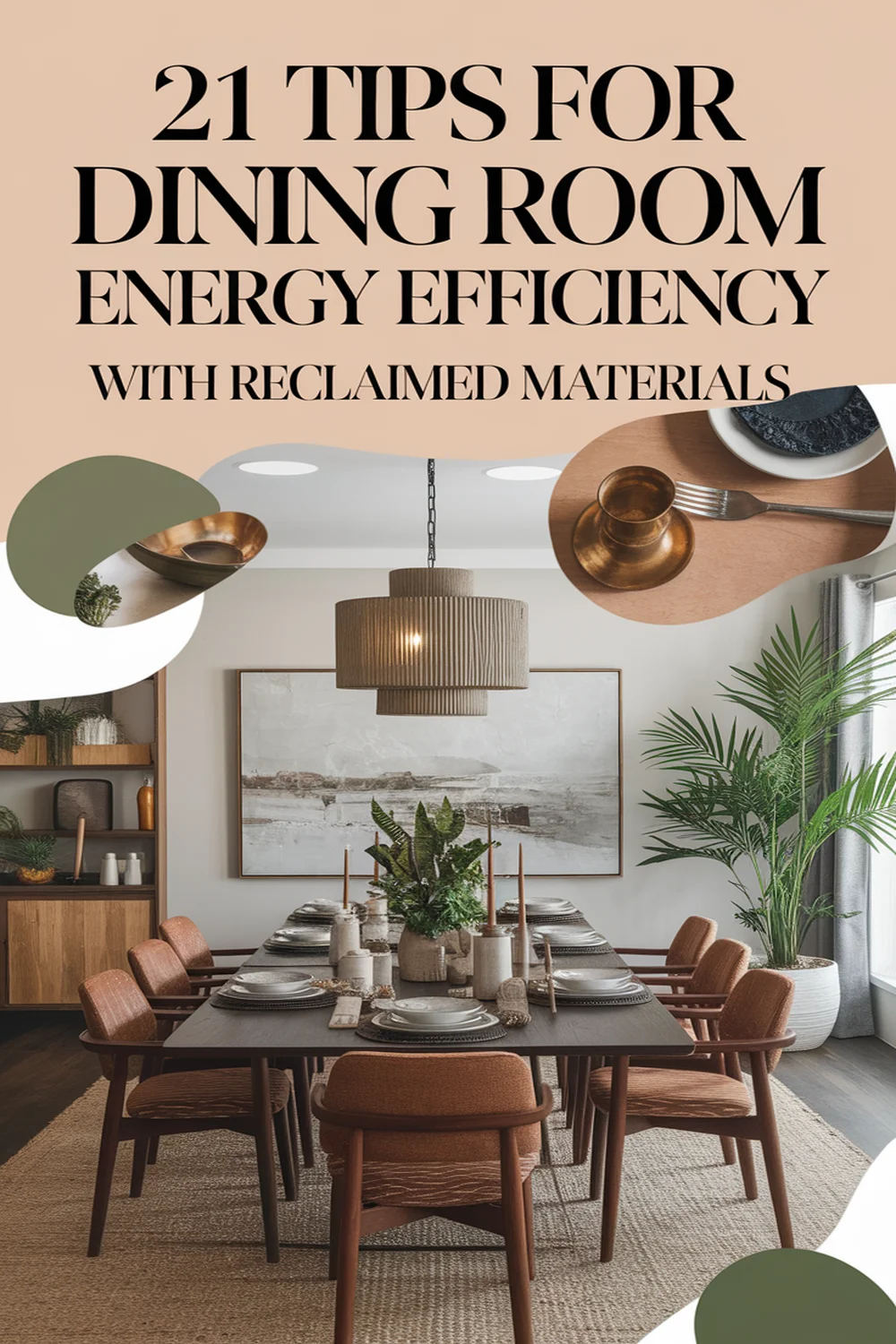This post may contain affiliate links. Please read our policy page.
Cork’s impressive insulation properties really enhance energy efficiency in kitchens. Its natural moisture resistance prevents mold and keeps surfaces dry, which is essential in damp areas. Plus, cork’s sound absorption qualities create a serene cooking environment, minimizing noise. It’s durable, low-maintenance, and attractive, making it perfect for various design elements. By investing in cork, you’re not just improving energy savings; you’re also creating a healthier kitchen. Stay with me to uncover even more advantages of this remarkable material.
Understanding Cork as a Sustainable Material
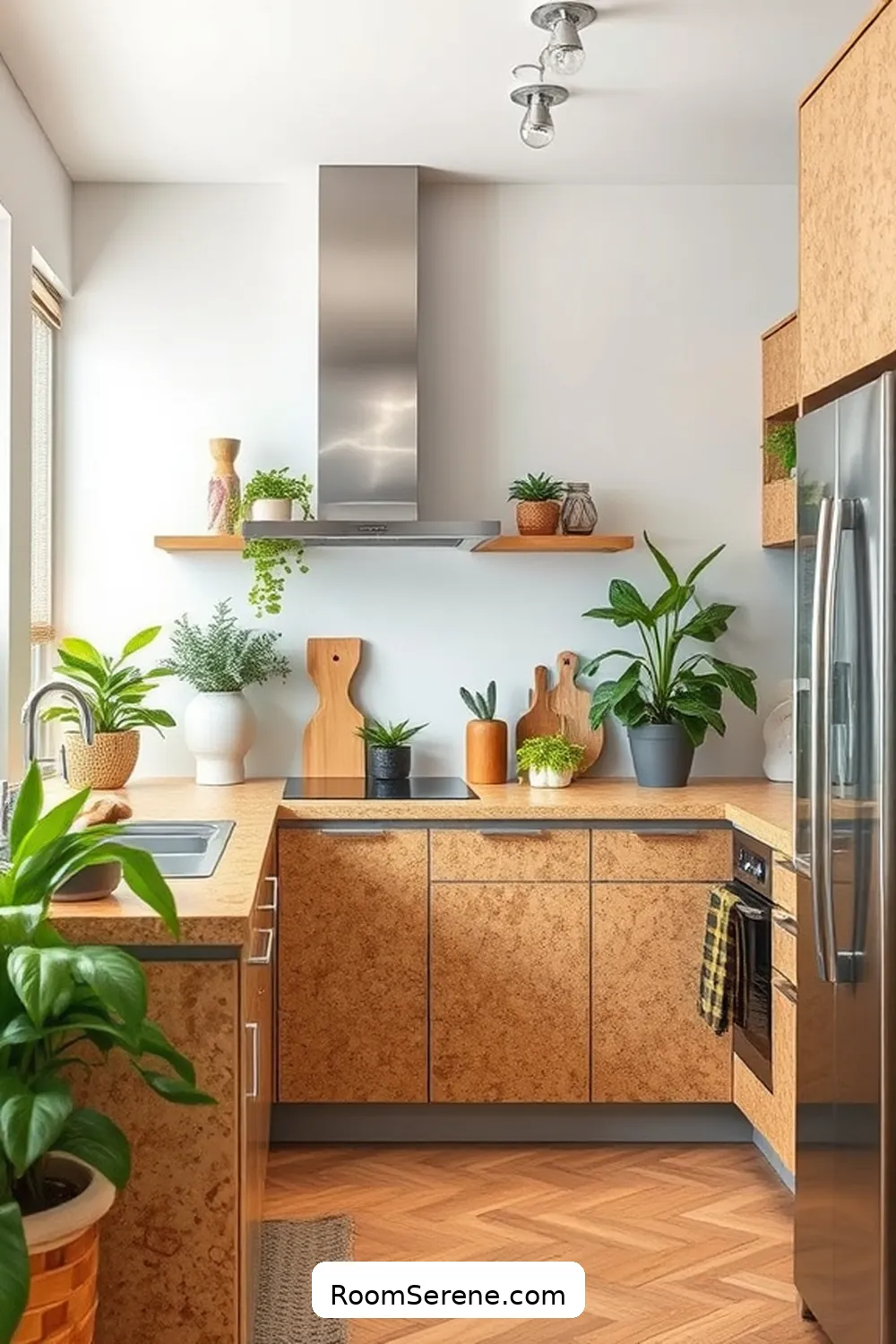
Cork, often overlooked in discussions about sustainable materials, plays a crucial role in energy efficiency, especially in kitchen environments. Its renewable nature sets it apart; harvested from the bark of cork oak trees without harming them, it’s a truly eco-friendly choice.
I’ve found that cork’s lightweight yet durable properties make it an ideal material for cabinetry and countertops. Not only does it reduce the carbon footprint, but its natural texture also adds aesthetic value to any kitchen design.
Using cork can lower energy consumption as it helps maintain temperature, reducing the need for heating or cooling. By choosing cork, we’re not just opting for sustainability; we’re investing in a healthier and more efficient kitchen space.
Natural Insulation Properties of Cork
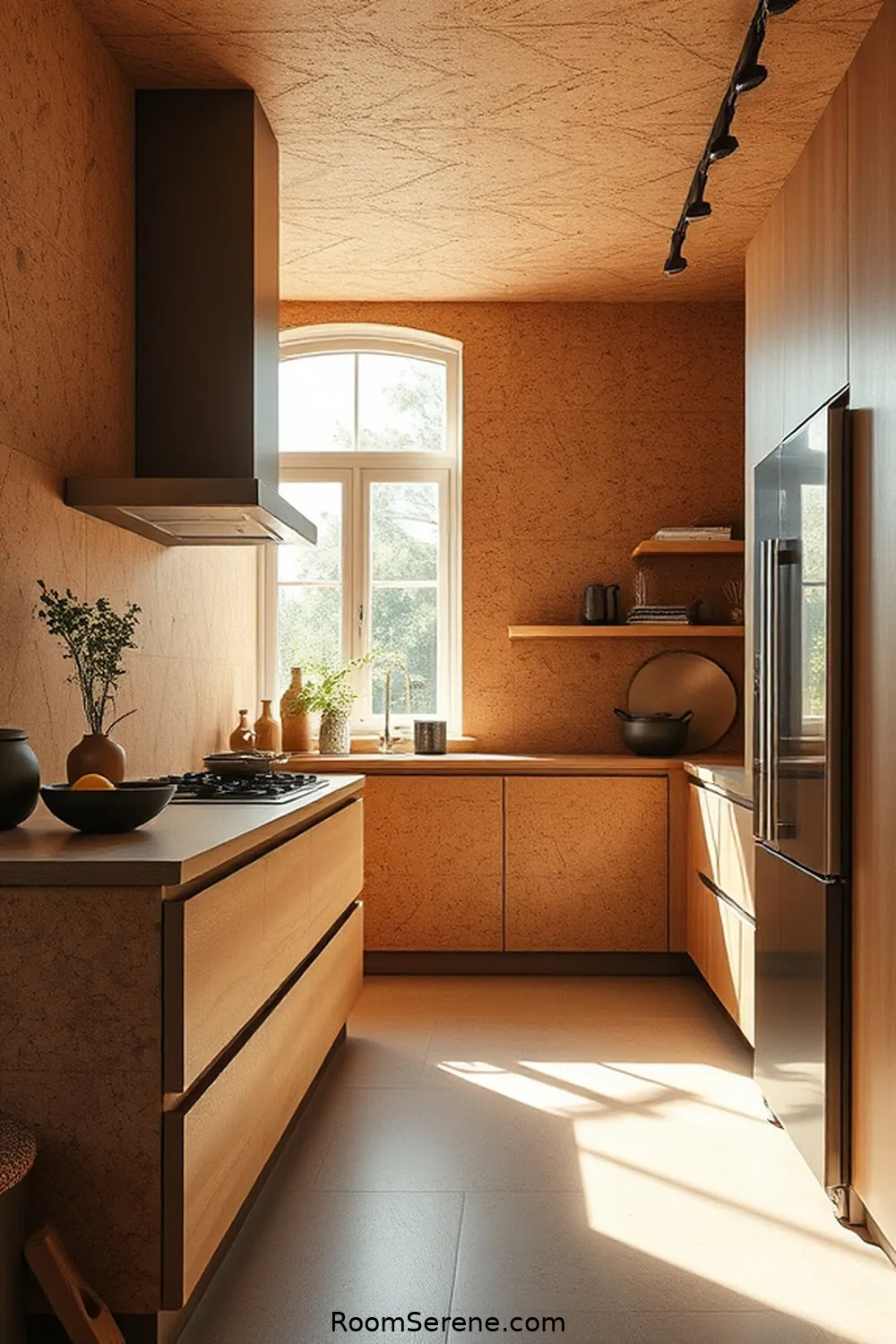
When considering materials for energy efficiency, the natural insulation properties of cork stand out remarkably. I’ve found that cork’s unique cellular structure traps air, providing excellent thermal insulation. This means it helps maintain consistent temperatures in the kitchen, reducing energy consumption.
To illustrate its effectiveness, here’s a comparison of insulation materials:
| Material | R-Value (Insulation Efficiency) | Eco-Friendliness |
|---|---|---|
| Cork | 3.6 – 4.2 | High |
| Fiberglass | 2.9 – 3.7 | Moderate |
| Foam Board | 3.6 – 4.0 | Low |
| Cellulose | 3.1 – 3.8 | High |
| Rock Wool | 3.0 – 3.3 | Moderate |
Moisture Resistance and Its Benefits
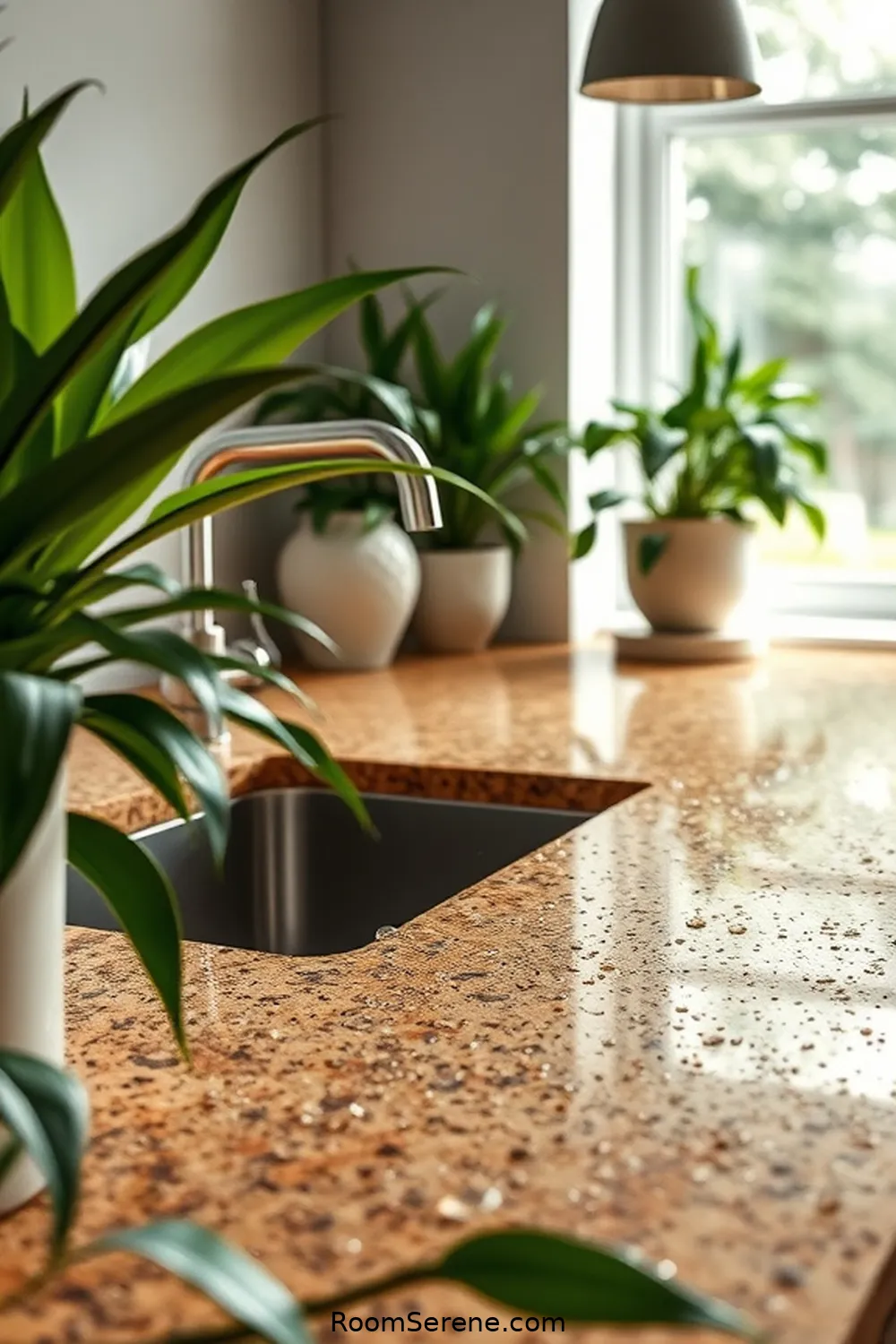
While many materials struggle with moisture, cork excels due to its natural resistance, making it an ideal choice for kitchen environments.
I’ve noticed that cork doesn’t absorb water like wood or certain composites, which helps prevent mold and mildew—a common issue in moisture-prone areas. This quality not only promotes a healthier space but also extends the lifespan of your kitchen surfaces.
Plus, cork’s moisture resistance means you won’t have to worry as much about spills or humidity affecting your countertops and flooring.
By choosing cork, you’re investing in a durable, low-maintenance option that keeps your kitchen looking pristine.
Ultimately, cork’s ability to repel moisture makes it a smart, efficient choice for energy-conscious homeowners like you.
Sound Absorption Qualities of Cork
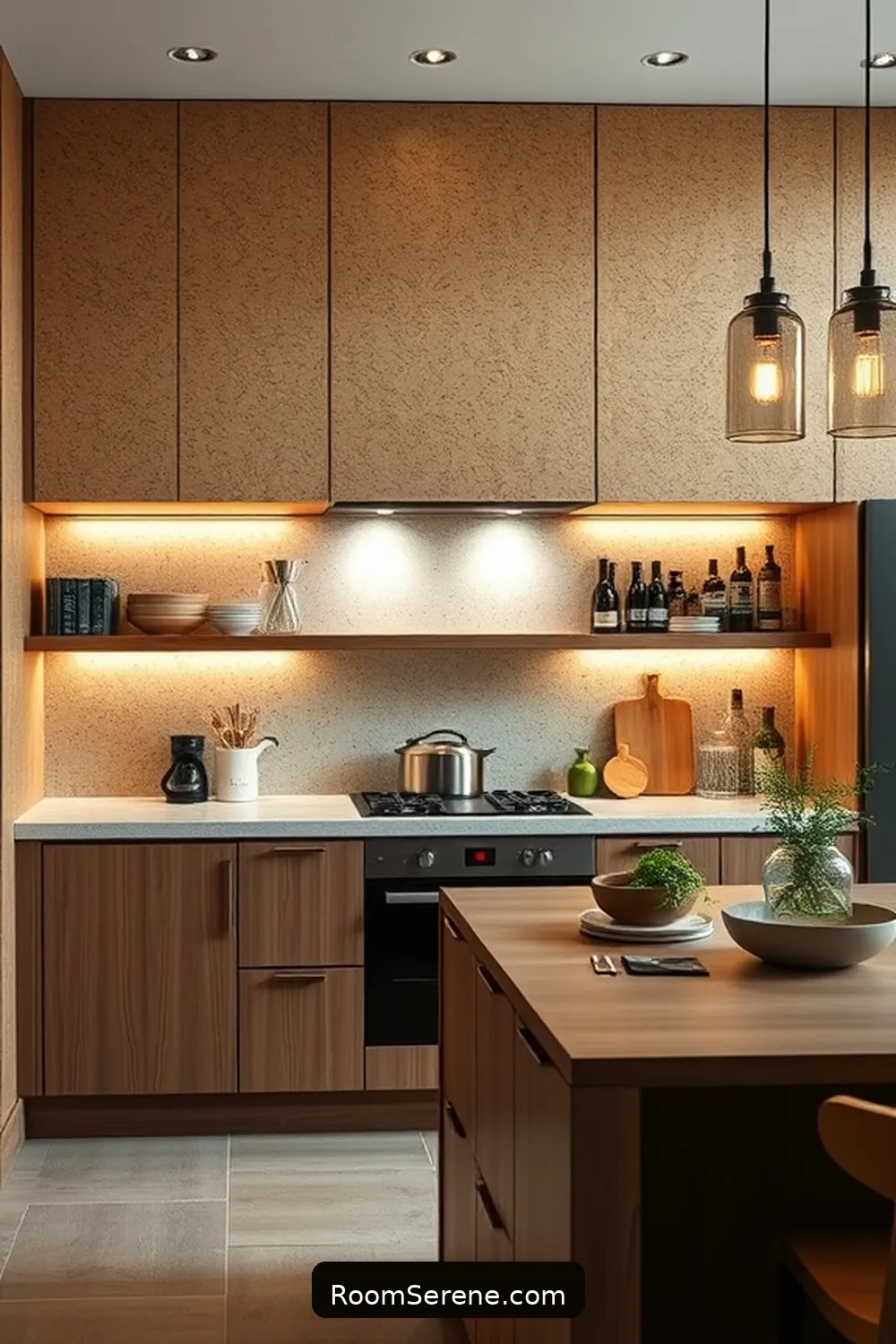
Beyond its impressive moisture resistance, cork also stands out for its sound absorption qualities, making it a valuable addition to any kitchen.
I’ve found that cork’s unique cellular structure effectively dampens noise, creating a more serene cooking environment. Whether you’re chopping vegetables or mixing batter, the clatter of utensils doesn’t echo off hard surfaces like it does with tile or hardwood.
Cork’s unique cellular structure absorbs sound, ensuring a serene cooking environment free from echoing utensils.
This feature is particularly beneficial in open-concept spaces, where sound can easily travel. By using cork flooring or wall panels, you can markedly reduce noise pollution, enhancing your overall kitchen experience.
If you value peace and tranquility while you cook, cork is an excellent choice that combines aesthetics and functionality effortlessly.
Thermal Regulation in the Kitchen
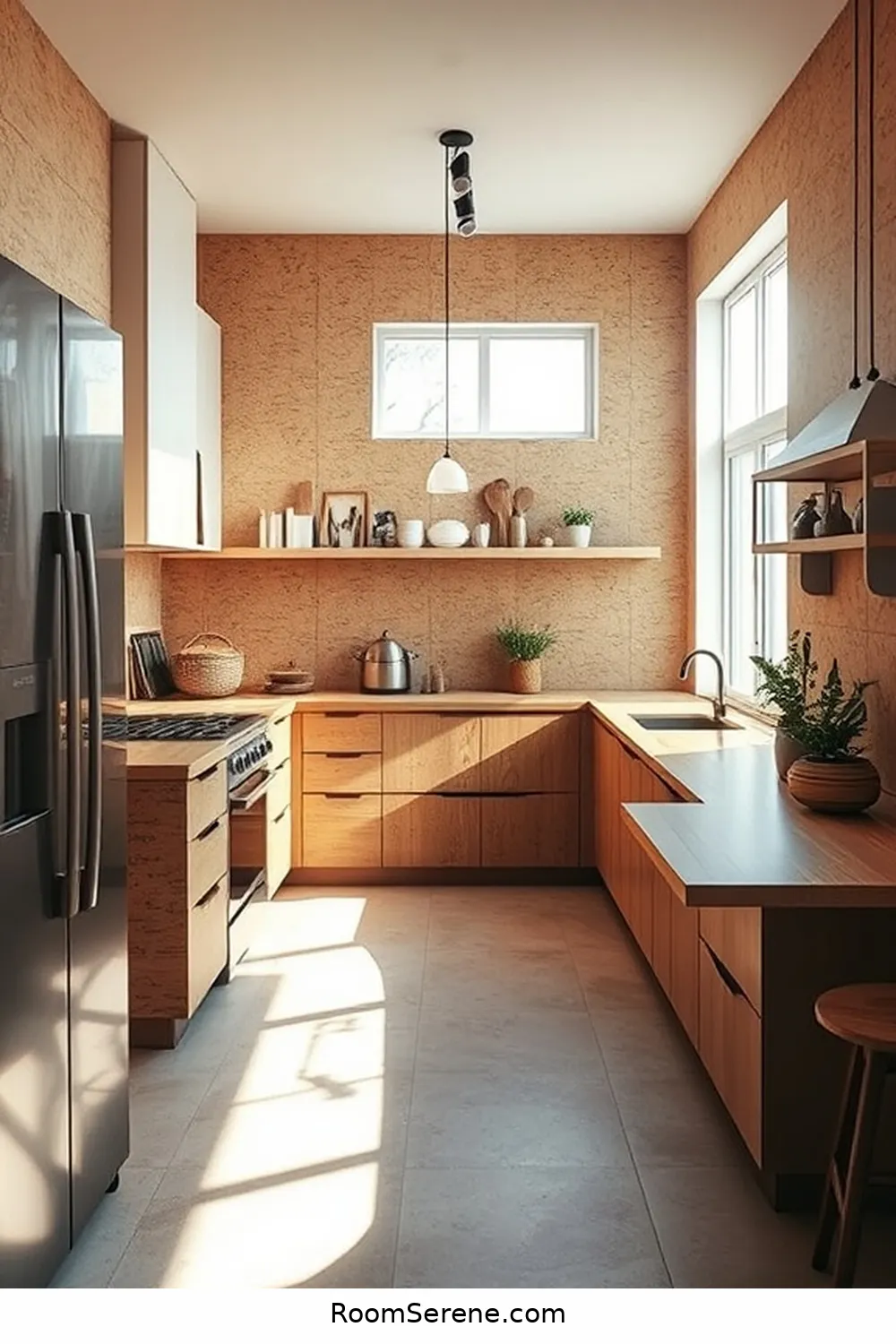
As I explore the benefits of cork in the kitchen, its thermal regulation properties immediately stand out. Cork acts as an excellent insulator, helping maintain a consistent temperature. This means I can reduce energy consumption while cooking. Here’s a quick comparison of cork’s thermal properties versus other materials:
| Material | Thermal Conductivity (W/m·K) | Energy Efficiency Rating |
|---|---|---|
| Cork | 0.04 | High |
| Wood | 0.12 | Medium |
| Tile | 1.0 | Low |
Using cork in countertops or flooring not only keeps my kitchen cozy but also contributes to lower energy bills. It’s a sustainable choice that enhances comfort while promoting energy efficiency—definitely a win-win!
Lightweight and Durable Nature of Cork
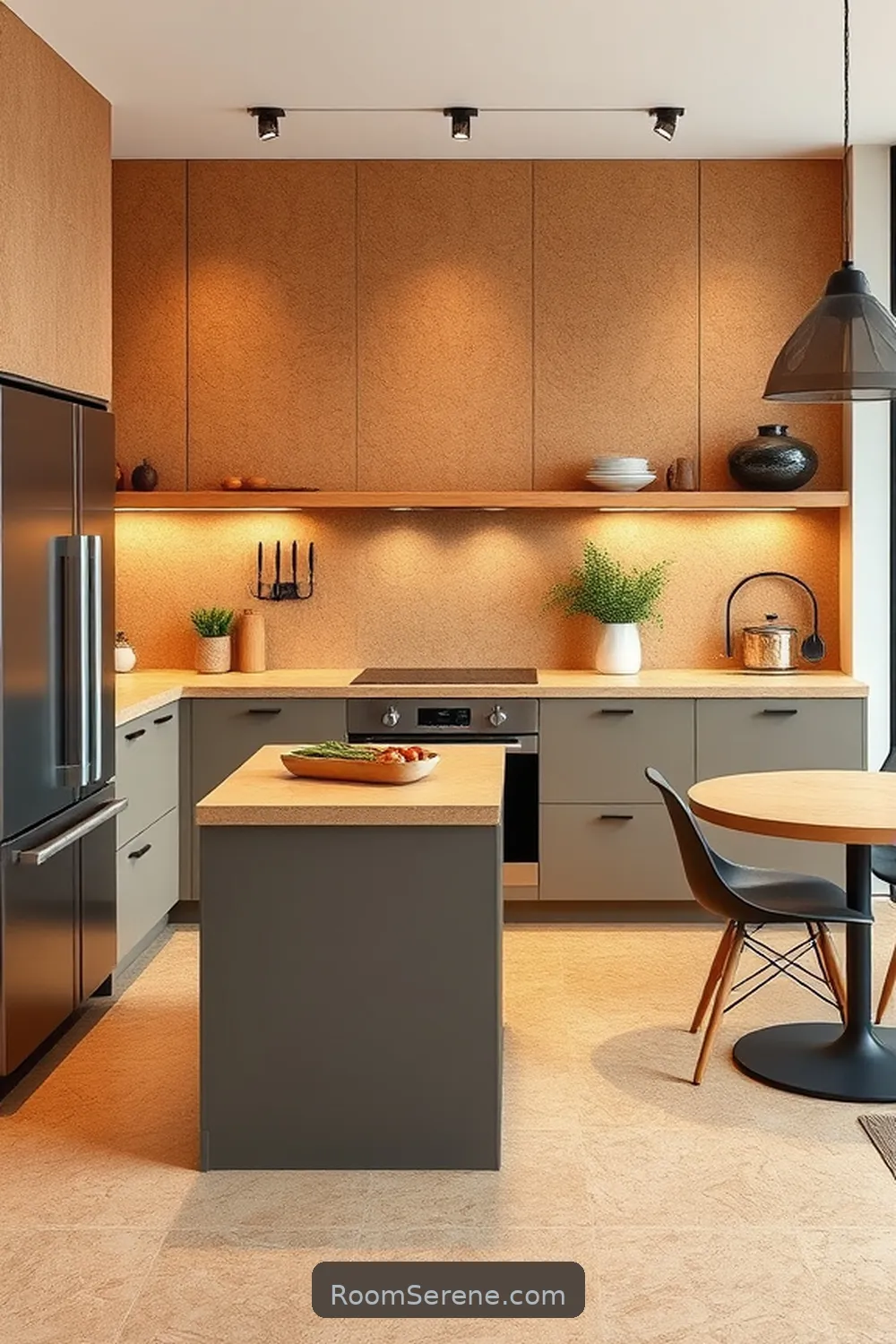
Given its lightweight and durable nature, cork proves to be an ideal material for various kitchen applications.
Cork’s lightweight and durable qualities make it perfect for a range of kitchen uses.
I’ve found that cork not only enhances energy efficiency but also offers several practical advantages:
- Ease of Handling: Its lightness makes it easy to move and install, saving time and effort.
- Resilience: Cork withstands wear and tear, ensuring longevity even in high-traffic areas.
- Natural Insulation: Its properties contribute to better temperature regulation, enhancing energy savings.
- Eco-Friendly: Being a renewable resource, cork is a sustainable choice that aligns with environmentally conscious practices.
Recommended Items
Discover our top picks for enhancing your kitchen’s energy efficiency with cork!
Cork Flooring for Energy Efficiency
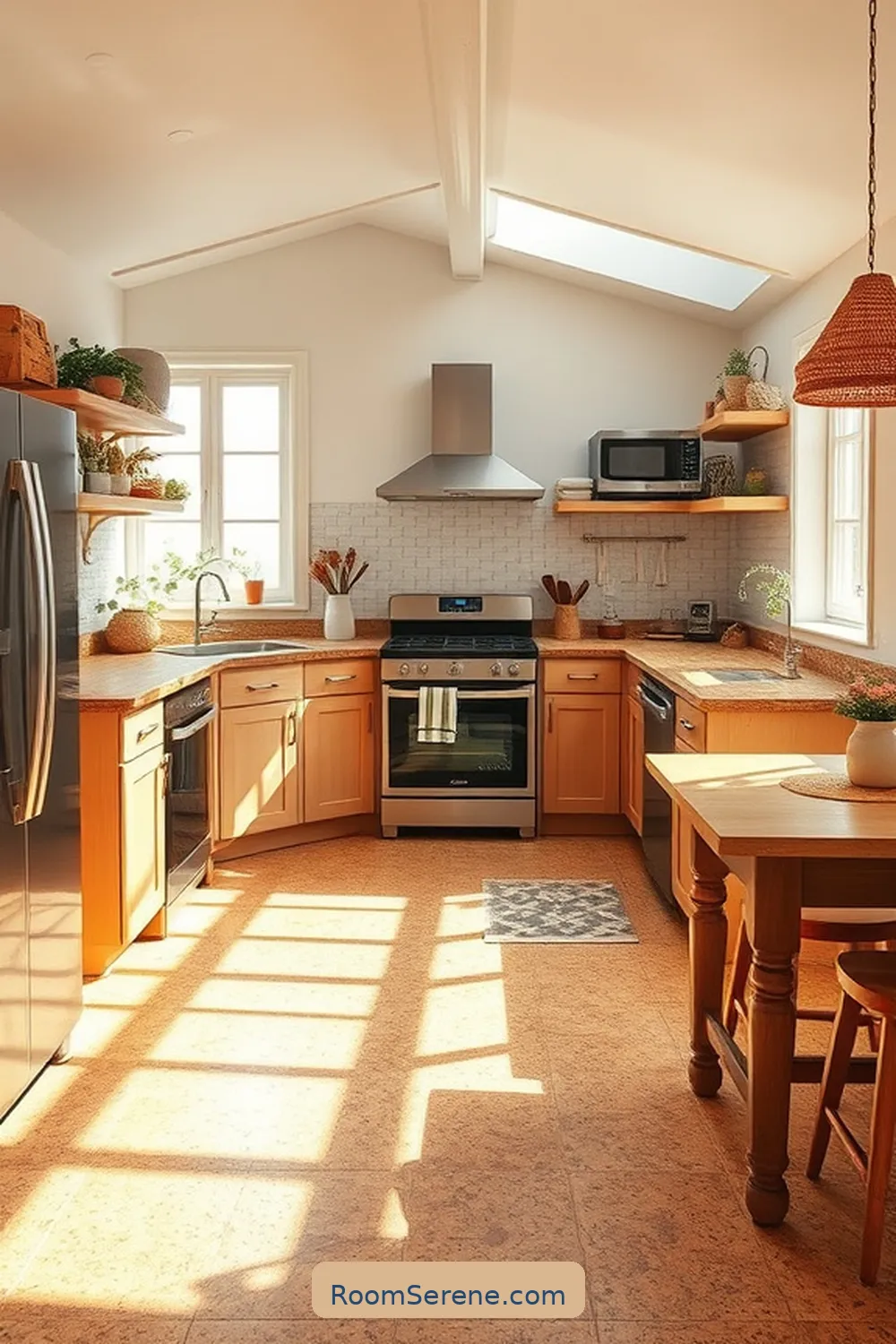
When I consider flooring options that bolster energy efficiency in the kitchen, cork stands out due to its unique thermal properties. This natural material acts as an insulator, helping to maintain a consistent temperature in the space, which can reduce energy consumption for heating and cooling.
Unlike traditional tiles or hardwood, cork absorbs heat during warmer months and releases it during cooler seasons, promoting a more comfortable environment. Plus, its soft surface provides a cozy underfoot feel, making long hours in the kitchen more enjoyable.
Choosing cork flooring also means investing in a product that’s both sustainable and stylish. Ultimately, cork not only enhances the aesthetic appeal of my kitchen but also contributes considerably to energy efficiency.
Eco-Friendly Manufacturing Process
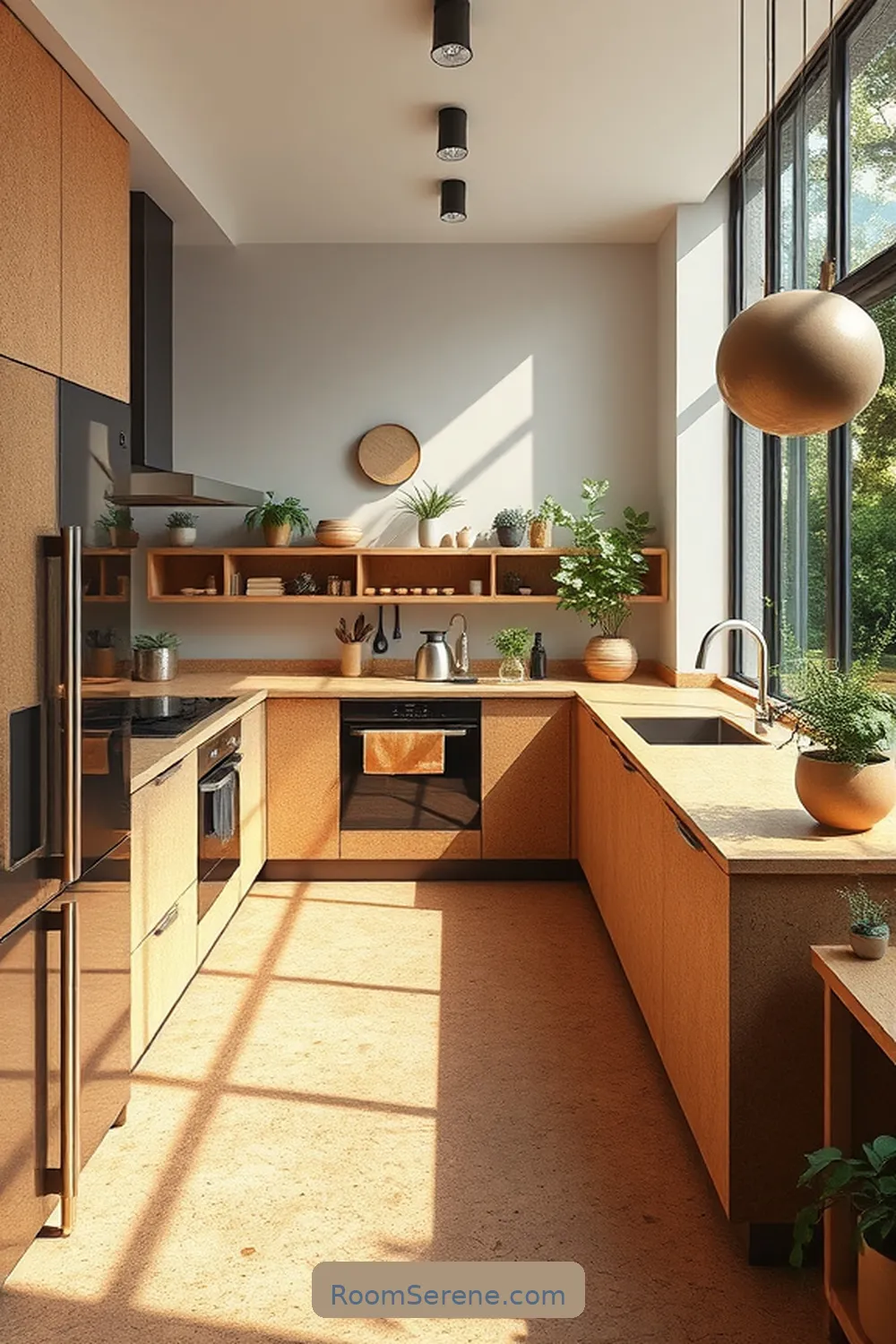
While many flooring materials come with a heavy environmental cost, I appreciate cork’s eco-friendly manufacturing process that sets it apart. The production of cork isn’t only sustainable but also involves minimal energy consumption.
Here are some key points that highlight its eco-friendliness:
- Harvesting: Cork is stripped from the bark of cork oak trees, allowing them to live and regenerate for decades.
- Natural Insulation: The material itself provides excellent thermal insulation, reducing energy usage.
- Biodegradable: At the end of its life cycle, cork is completely biodegradable, leaving no harmful waste.
- Low Emissions: The manufacturing process generates low carbon emissions, contributing to a healthier environment.
Choosing cork means supporting a product that’s not only beautiful but also aligns with sustainable living principles.
Action Steps for Cork Kitchen Decor
Versatility in Design Applications
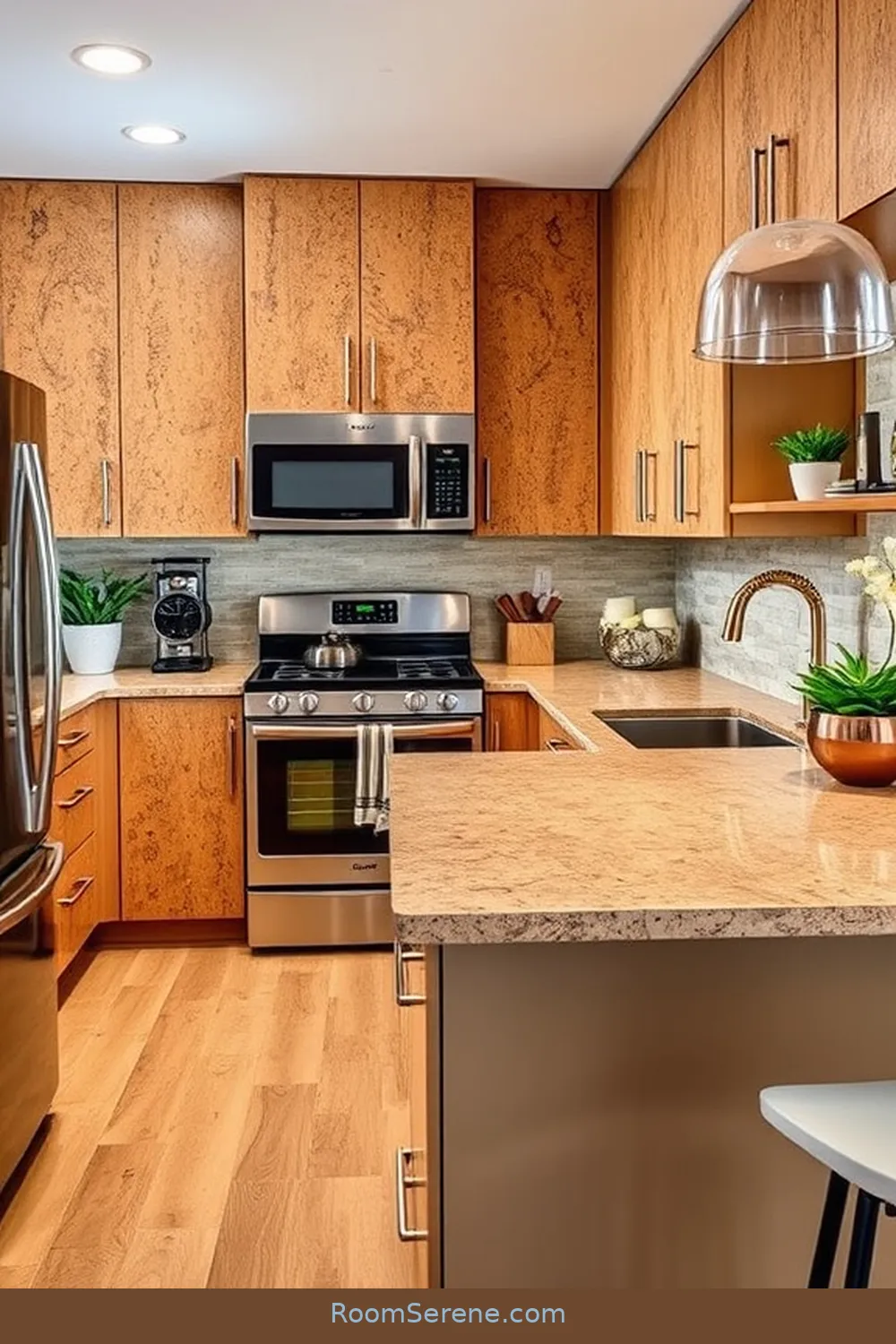
Cork’s adaptability in design applications makes it a standout choice for kitchen spaces, as it effortlessly complements various aesthetics.
Whether you lean towards a modern minimalist look or a rustic farmhouse vibe, cork’s natural warmth and texture seamlessly integrate into any style. I’ve seen it used as countertops, backsplashes, and even flooring, proving its versatility.
Plus, cork’s ability to be dyed or patterned means you can customize it to match your vision. It isn’t just visually appealing; its insulation properties help maintain temperatures, making your kitchen more energy-efficient.
By choosing cork, you’re not only enhancing your kitchen’s design but also investing in a sustainable material that supports energy savings.
Isn’t it time to elevate your kitchen with this remarkable option?
Health Benefits of Using Cork
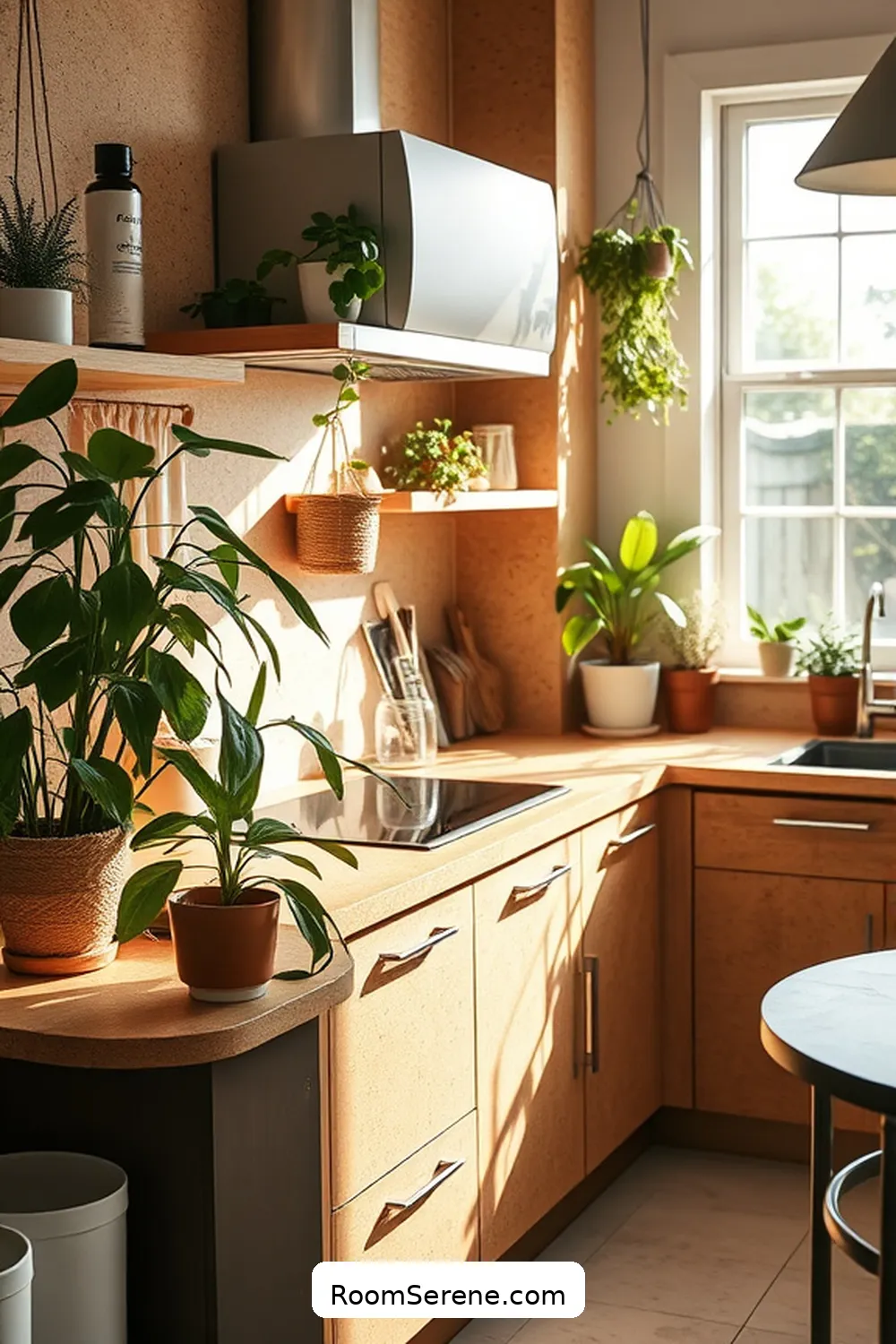
Beyond its aesthetic and energy-saving benefits, cork also offers impressive health advantages that make it an even more appealing choice for kitchen spaces.
Cork not only enhances aesthetics and energy efficiency but also provides significant health benefits for your kitchen.
I’ve found several reasons to love cork in my kitchen, and I believe you’ll too:
- Natural Antimicrobial Properties: Cork resists bacteria and mold, promoting a healthier cooking environment.
- Hypoallergenic: It’s less likely to trigger allergies, making it suitable for sensitive individuals.
- Air Quality Improvement: Cork can help regulate humidity, reducing the presence of harmful pollutants.
- Non-Toxic: Unlike some materials, cork is free from harmful chemicals, ensuring a safer space for food preparation.
Incorporating cork not only enhances the kitchen’s functionality but also supports overall health, making it a smart choice for any home.
Long-Term Cost Savings With Cork
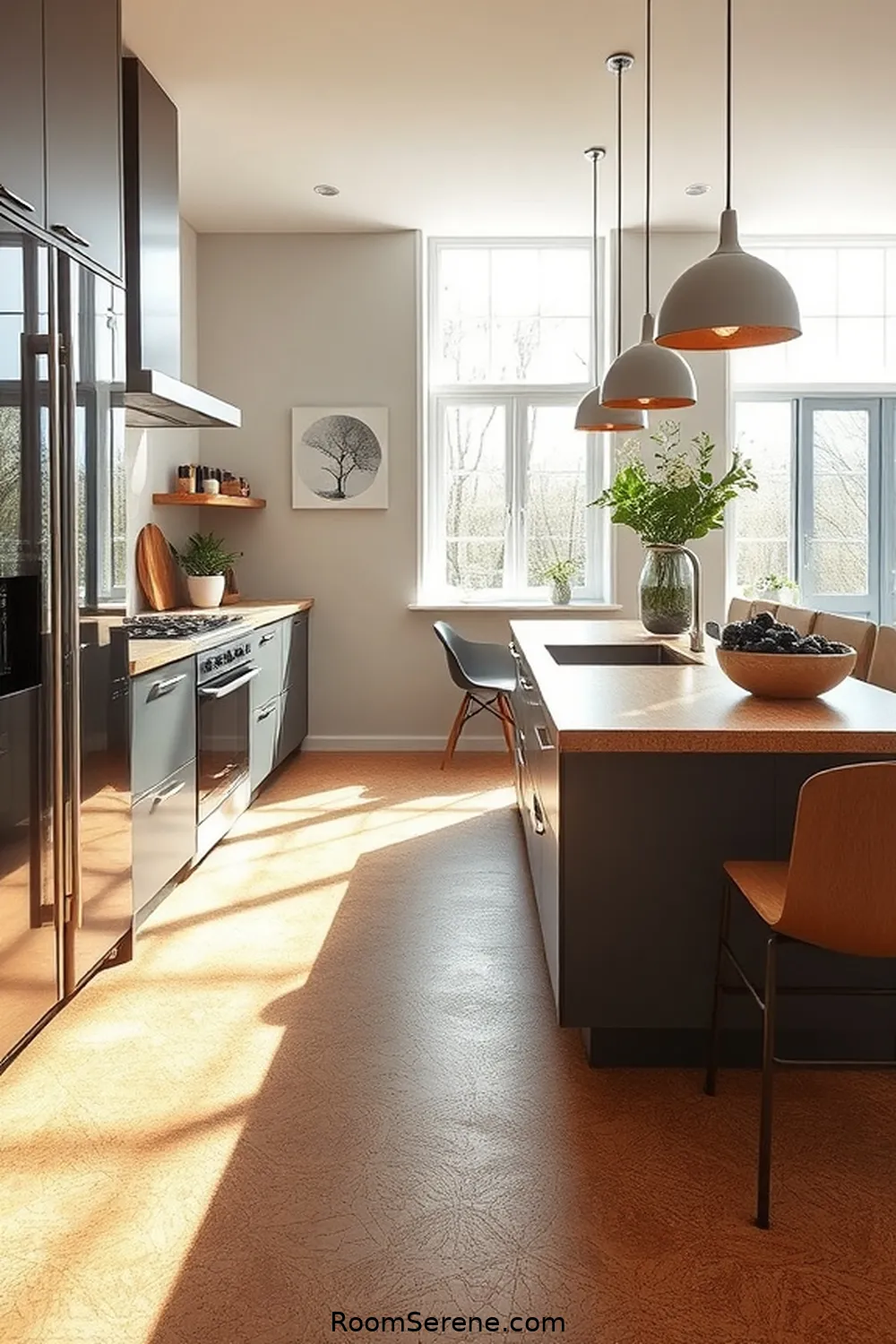
When considering kitchen renovations, I often weigh not just the initial investment but also the long-term savings that materials can provide.
Cork is an excellent choice for this, as its natural insulation properties can markedly reduce energy bills. By maintaining a stable temperature, cork minimizes the need for heating and cooling, leading to lower utility costs over time.
Moreover, cork’s durability means fewer replacements and repairs, saving you money in the long run. It’s also easy to maintain, which reduces cleaning costs and effort.
When I factor in these savings, the upfront cost of cork becomes a wise investment. Ultimately, choosing cork not only contributes to energy efficiency but also leads to considerable financial benefits over the years.

